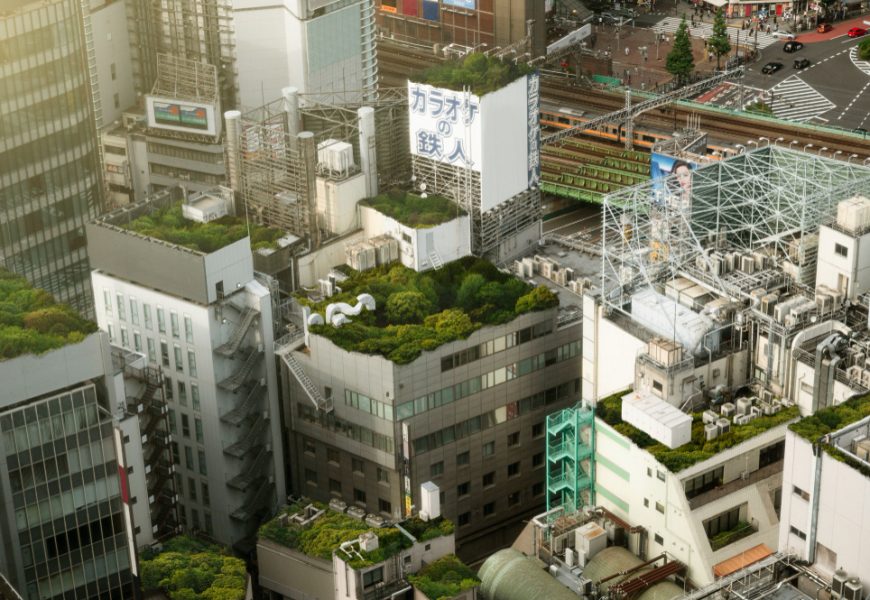The modern metropolis is more than a collection of buildings and streets—it is a functioning climate engine. Hidden beneath the daily rhythms of commuting, commerce, and construction lies a complex interplay between human design and atmospheric behavior. Every paved surface and reflective skyscraper modifies the flow of heat, moisture, and air in ways that ripple far beyond city limits. What was once mere urbanization has become a planetary-scale experiment, quietly tuning local climates in the background of our daily lives.
Cities absorb more energy than they reflect, particularly through dark materials such as asphalt and concrete, both of which soak in sunlight during the day and release it slowly after sunset. This thermodynamic imbalance creates the urban heat island effect, a well-documented phenomenon where city centers remain several degrees warmer than surrounding rural areas. Over time, these additional degrees shift energy flows, affecting wind patterns, precipitation, and even cloud formation. Skyscrapers, meanwhile, reshape the movement of air—channeling gusts into narrow corridors and altering breezes that once flowed freely.
At a molecular level, urban life redefines the chemistry of the air itself. Exhaust from vehicles and heating systems injects fine particulates, compounds that not only degrade air quality but also influence how sunlight is absorbed or scattered. Even humidity behaves differently in built environments, where impervious surfaces prevent moisture from sinking into soil, leading to hotter, drier afternoons and warmer, more humid nights. As skylines rise, human-made structures act as new “mountains,” redirecting air currents and changing rainfall distribution—sometimes causing more frequent storms at the city’s edge while diminishing snow or frost within its core.
The invisible thermodynamics of urban growth remind us that cities are not static artifacts—they are reactive organisms. Each new rooftop garden, each loss of an old tree canopy, each kilometer of fresh concrete contributes to a feedback system that perpetually reinvents how the atmosphere behaves above and between the buildings. Our cities breathe, sweat, and radiate, composing their own microclimates with every passing hour.
The transformation of a city’s climate begins subtly—one parking lot here, one removed meadow there—but over decades, the sum of these small modifications becomes monumental. Paved surfaces disconnect the soil from the atmosphere, cutting off natural cycles of respiration and water absorption. This is not just a loss of greenery; it’s the loss of a critical thermal regulator. Without permeable ground, rainfall rushes into drains instead of seeping into the earth, limiting evaporation that would otherwise help moderate temperature extremes.
The urban footprint also transforms seasonal patterns. Winters in large cities often feel milder because heat retained from human activity and infrastructure prevents deep frost from forming. Conversely, summers grow more oppressive as heat becomes trapped beneath layers of pollution and high-rises. This combination can lead to more violent storm events along the fringes of metropolitan areas, where rising warm air collides with cooler rural flows. The resulting convection can intensify rainfall, occasionally swamping suburbs that were once temperate.
Embedded within this meteorological reshuffling is a quiet shift in how the atmosphere’s energy budget works. Reflected sunlight (albedo), radiative cooling at night, and even the absorption spectra of pollutants are changing in concert. For instance, lighter-colored rooftops can mitigate heat build-up, yet dark tinted windows or asphalt roofs amplify it again. The complex geometry of urban surfaces creates a fractal of competing energy flows, where shade, reflection, and radiation depend on orientation, material science, and human activity patterns.
Beyond the physical, infrastructure itself plays unexpected roles. Dense communication networks—cell towers, microwave links, and electromagnetic systems—may marginally influence atmospheric properties, though not yet to the scale of weather modification. Still, they embody how deeply integrated human technology now is with planetary systems. Vehicle exhaust and industrial emissions, meanwhile, feed chemical reactions that hasten the formation of ground-level ozone, linking air pollution to broader climate alteration.
For city planners, engineers, and policymakers, these realities pose an ethical and technical challenge. How can urban areas grow without further destabilizing ecological balance? The answer increasingly lies in designing with the atmosphere in mind—constructing reflective surfaces, encouraging urban forests, implementing green roofs, and aligning architecture with prevailing wind corridors to restore ventilation and natural cooling. Integrating hydrology, vegetation, and architecture transforms cities from energy sinks into semi-natural participants in the Earth’s broader climate machine.
Ultimately, the evolution of city weather is a story of feedback—how human ambition loops back through physical laws to modify the environment that sustains us. The invisible effects of urban growth are the pulse of modern civilization itself: quiet, cumulative, and irreversible without intent. Recognizing that each city now possesses its own microclimatic signature may help urban humanity craft more resilient futures, where the built and natural worlds are no longer rivals but intricately synchronized systems, coexisting beneath a shared, ever-shifting sky.









